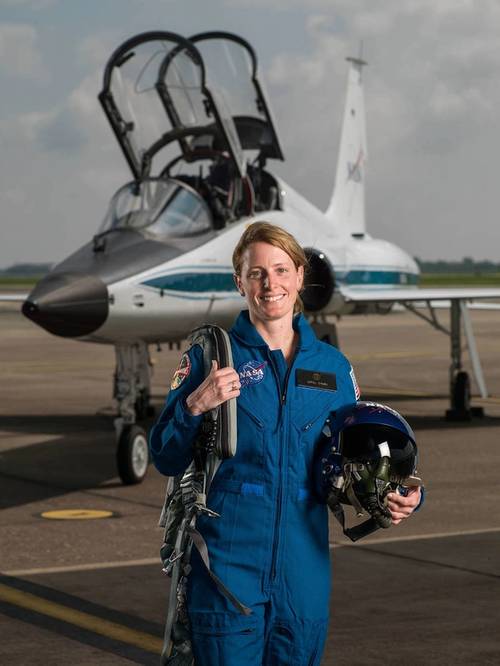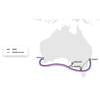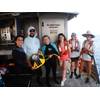NASA’s most recent class of astronauts was introduced June 7, 2017 at Johnson Space Flight Center. Among the group of 12 astronaut candidates is Woods Hole Oceanographic Institution (WHOI) research engineer Loral O’Hara, selected from NASA’s largest ever applicant pool of more than 18,300.
"We couldn’t be more proud of Loral for her selection into NASA's astronaut corps," said WHOI President and Director Mark Abbott. "We hope the seagoing experience gained at WHOI serves her well in her new adventure. Whether in outer space or the depths of the ocean, humanity stands to gain immeasurably through exploration."
The Texas-native O’Hara earned her B.S. in aerospace engineering from the University of Kansas, and her M.S. in aeronautics and astronautics from Purdue University. As a student, she participated in NASA’s KC-135 Reduced Gravity Student Flight Opportunities Program, the NASA Academy at the agency’s Goddard Space Flight Center, and the internship program at NASA’s Jet Propulsion Laboratory.
She came to WHOI in 2009, initially as an engineer working on mechanical system design, systems engineering and naval certification for the project to upgrade the human-occupied submersible Alvin. Most recently, she worked with the remotely operated vehicle (ROV) Jason Operations Group as an engineer and seagoing mechanical technician and data processor, and contributed to a variety of subsea system development projects within WHOI that included development of novel underwater vehicles to explore extreme deep sea environments. She has participated in 10 research cruises, and, in 2013, completed a dive in Alvin.
"I love exploration, particularly when it involves people," O’Hara told WHOI’s Oceanus magazine in 2013. "What I want to do with my life is build vehicles that let people work and live in places that are either inaccessible or accessible to only a few."
O’Hara holds a private pilot’s license as well as several advanced diving certifications. She also has completed first-aid and EMT training and is a wilderness first responder.
She will report for duty at Johnson Space Center in August 2017.
According to NASA, the new class will be part of future missions aboard the International Space Station that will continue research and technology development that has already returned benefits to Earth.
They will also be candidates for flights beyond the moon and into deep space aboard the Orion spacecraft that will help pave the way for missions to Mars.
The connection between exploration of space and the ocean is not new. WHOI noted. The space shuttle Atlantis was named after WHOI's first research vessel and the first U.S. ship built solely for the purpose of conducting oceanographic research. In 2007, WHOI biologist Tim Shank in Alvin two miles beneath the surface of the ocean had a radio conversation with NASA astronaut Suni Williams aboard the International Space Station. In 2012, the U.S. Navy named the first Ocean Class research vessel, operated by WHOI, after Neil Armstrong, the first man to walk on the moon.




![Microplastic beads seen in the central tube of a copepod [their intestinal tract], as evidenced here, fluorescently labelled beads help with visualization and identification. © PML](https://images.marinetechnologynews.com/images/maritime/w100h100padcanvas/microplastic-beads-seen-166795.jpeg)










 December 2025
December 2025



